Top 11 Most Beautiful Historical Sites in Portugal
Since prehistoric times, Portugal's territory has been continuously populated, conquered, and fought over, making it the oldest nation state on the Iberian ... read more...Peninsula and one of the oldest in Europe. Let’s discover the most beautiful historical sites in Portugal with Toplist now!
-
The Roman Villa of Sao Cucufate, also known as Villa Aulica, is an archaeological site in Portugal that dates back to the first century AD. Augustine canons were the first to live in the convent, followed by Benedictine monks. By the 17th century, the monastic community had abandoned the structure, except for a single hermit. The soil was unusually productive in the area, and the surrounding grounds are supposed to have supported the local inhabitants for a little longer.
The ruins of the Roman Villa of Sao Cucufate are highly spectacular and distinct, rising to a second story. Within the villa complex, visitors may also observe the ruins of the hot and cold baths. Keep an eye out for the stunning frescoes from the 16th and 17th centuries. Allow an hour or two to fully explore the remaining structures, which are a combination of Roman and Medieval in style.
Location: Alentejo
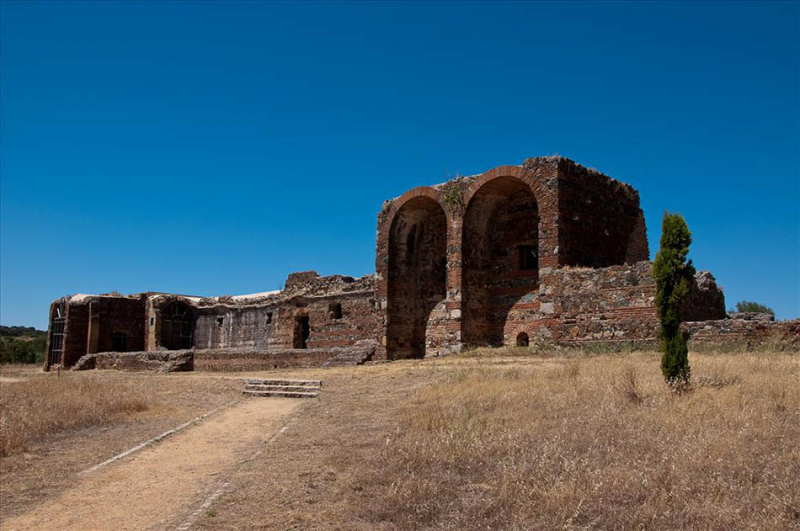
Source: Portugal 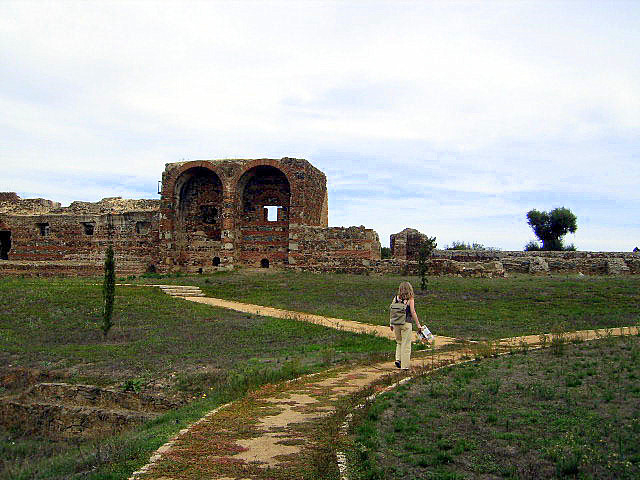
Source: Wikipedia Commons -
Citania de Briteiros is an archaeological site in Portugal that contains the ruins of an ancient community from the 2nd century BC. Citania de Briteiros was home to a castro civilization, so termed because the high areas where they inhabited were referred to as "castros."
Visitors can see the ruins of an Iron Age hillfort as well as a cremation furnace today. At the visitor's center, there's also a modest museum of unearthed finds, as well as breathtaking views of the valley.
The settlement of Citania de Briteiros, built during the 1st and 2nd century BC, was built in an area known for rock art engravings during the Atlantic Bronze Age. As stones were cut to build family houses and protective fortifications, many of these engraved rock surfaces were destroyed. The Celts of the Castro culture lived in Citânia de Briteiros, where they built forts on hilltops and hid their valuables in rocky outcrops.
Location: Guimaraes
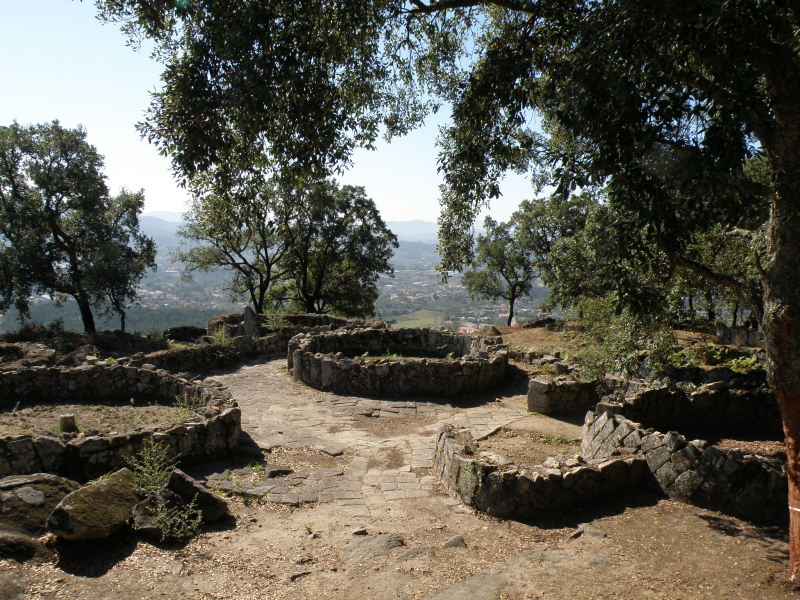
Source: Wikipedia Source: R&S Rec and Share -
During the Peninsular War, the Battlefield of Bussaco (or Buçaco) in Portugal saw a British-Portuguese triumph over the French. The French Marshal André Masséna's headquarters are open to the public, as is the adjoining military museum.
The Bussaco Battlefield, which took place on September 27, 1810, and marked the start of the three-year Peninsular War, saw Lord Wellington's Anglo-Portuguese army defeat French forces. The British began the Siege of Ciudad Rodrigo in April of 1810, after Emperor Napoleon had ordered his marshal Masséna to push them out of Portugal.
Visitors can now walk along the battle ridge lines, marveling at the attacking French's exceedingly difficult ascent. At the battlefield's southern end, there is a small museum with historical weapons and maps of the action. Those who want to relive the war can stay at the inviting Grand Palace Hotel, which is located in the beautiful Bussaco Forest and was once a 17th century monastery where Wellington slept before returning to the battle's crescendo. The region is also well-known for its excellent wine.
Location: Bussaco
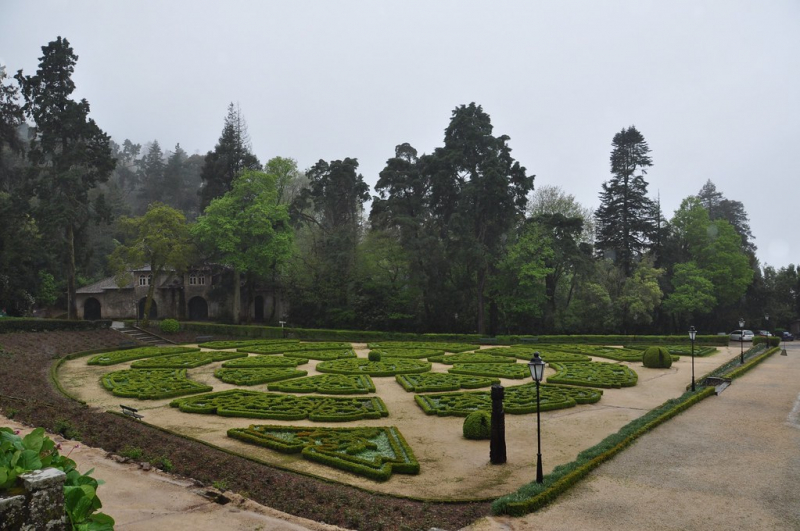
Source: Flickr Source: 360Portugal - Portugal seen from all angles -
After the area reverted from Muslim to Christian power in 1249, Faro Cathedral was built upon the remains of a Roman forum that had been converted into a mosque. Faro Cathedral has been damaged and destroyed since then, both as a result of attacks and natural disasters like the disastrous earthquake of 1755. Faro Cathedral, with its combination of architectural elements, now offers spiritual and artistic joy to visitors, particularly with its tiling and gold leaf embellishment from the 17th and 18th centuries.
Against the bright blue Portuguese skies, the cathedral's whitewashed walls surround the towering stone Gothic entrance and bell tower. For only €3,5 you can visit the Faro Cathedral's courtyard, which is flanked by three huge arches that support a tower that hasn't changed since the 13th century.
The notable chapels of Saint Lenho and the main chapel, as well as 17th century panels, may be found inside. The Chapel of Our Lady of Pleasures is a stunning piece of Baroque architecture. Climb to the top of the medieval tower for a breathtaking perspective of the walled city and the Algarve's gorgeous coastline.
Location: Faro
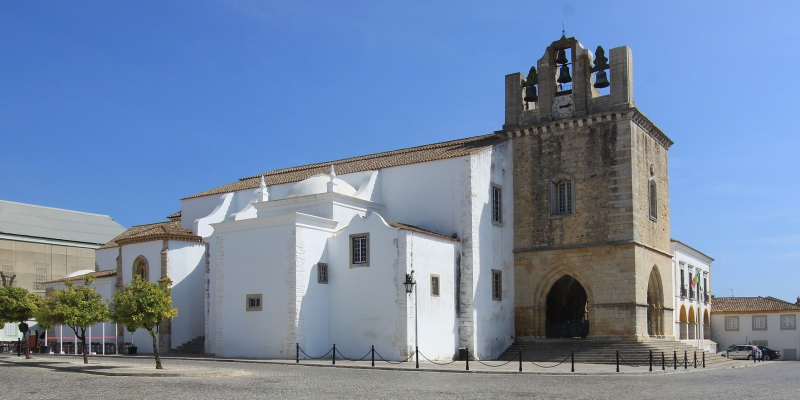
Source: Wikipedia Source: Shackred -
The Jerónimos Monastery, also known as the Hieronymites Monastery, is a well-known 16th-century monastery in Lisbon that, along with the nearby Tower of Belém, is one of the most beautiful historical sites in Portugal. The Jerónimos Monastery, together with the Tower of Belem, was designated a UNESCO World Heritage Site in 1983. It is the most remarkable emblem of Portugal's strength and wealth during the Age of Discovery.
This structure is notable for its ornate façade and spectacular Manueline architecture - the best example of Manueline architecture in Portugal – a style that sought to exalt the age's great "discoveries." The lavishly decorated columns carved with maritime symbols, as well as the distinctive double-story cloister architecture, which features beautifully scalloped arches, twisting turrets, gargoyles, and columns interlaced with leaves, vines, and knots, are particularly striking.
The cloister's main attractions are the large refectory hall, which functioned as the monks' dining room and is furnished with stunning 16th century azulejo panels and the Lion Fountain outside, where the monks washed their hands before meals. A garden leads from the wide church's interior to a little park bordered by a row of charming 16th-century residences.
Location: Lisbon
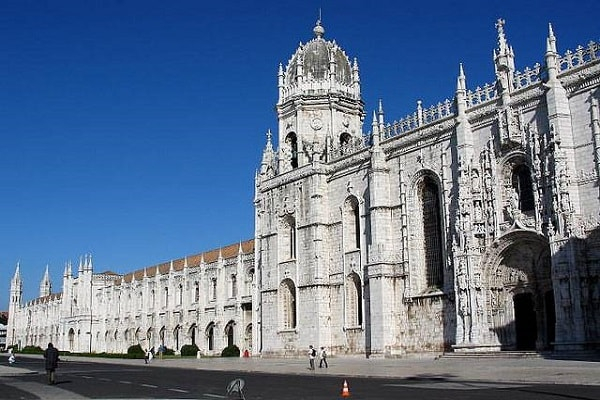
Source: What's On In Lisbon Source: Wonderliv Travel -
The remnants of an important trading center that evolved into a modest residential village can be found in the ruins of the Roman colony of Troia in Portugal. Troia was recognized for its manufacturing and trade of the famed Roman fish-based sauce Garum, as well as for creating salted fish: the abundance of salt and fish in areas of the River Sado meant that this area became known for fish processing, and their products were distributed across the empire. Ruins nearby, such as those of Creiro, indicate that it had a similar industry.
Roman Ruins of Troia are located near a popular beach resort nowadays. The vast fish-salting complex, a series of Roman baths, an old mausoleum and cemetery, and the ruins of the settlement's residential quarters are all still open to visitors. An early Christian basilica can also be found on the grounds, albeit it is only accessible on guided excursions. Roman Ruins of Troia is one of the most beautiful historical sites in Portugal.
Location: Setubal District
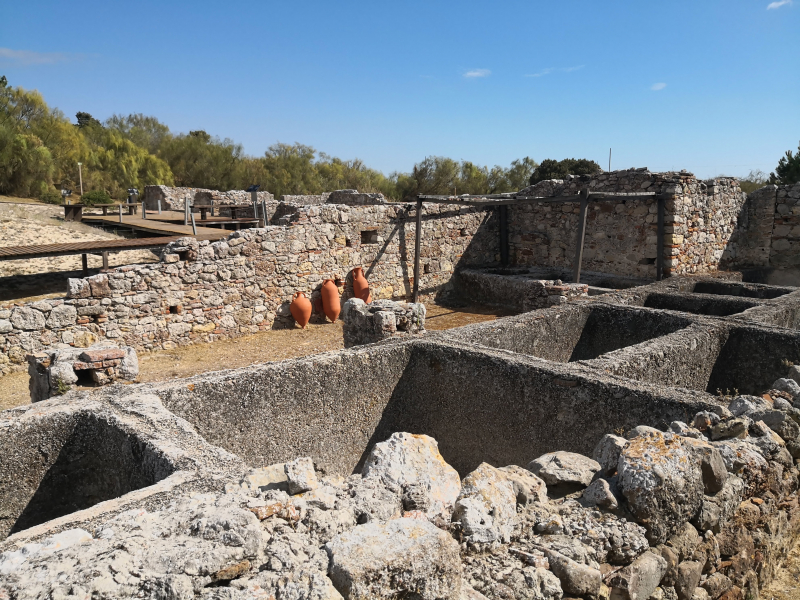
Source: Wikipedia 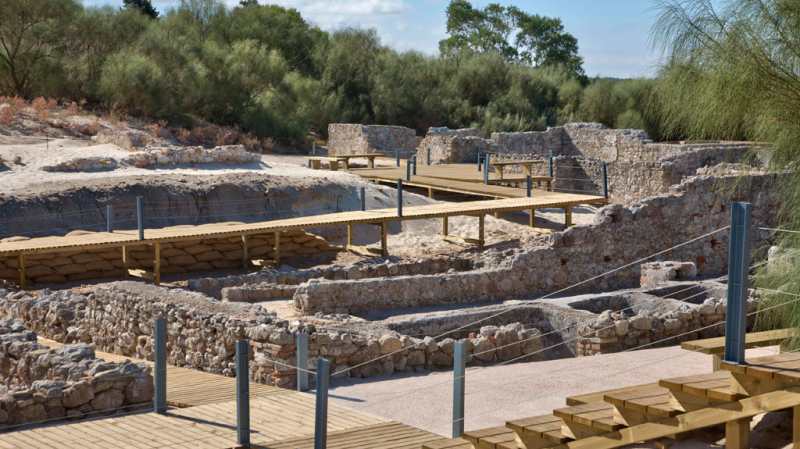
Source: Troia Resort -
The historic citadel of St George's Castle in Lisbon sits atop the city's tallest peak, overlooking the Tagus River. It is one of Lisbon's most beautiful and distinctive icons, visible from practically anywhere in the city. The hill on which St George's Castle stands was originally occupied in the 6th century BC, and the first defenses were built in the 2nd century BC. The indigenous Celtic and Iberian tribes of Lisbon, as well as the Romans, Visigoths (5th century), and Moors, all saw this hill as strategically important (mid-11th century).
People nowadays largely come to St George's Castle for the stunning views of Lisbon from the Ulysses Tower (which houses the Câmara Escura, a periscope that projects views from all across the city). The Castle's silhouette shines out both during the day and when illuminated at night.
A visit to So Jorge Castle will take the better part of a morning due to the size of the site — in addition to the Castle and its 11 towers, there is a modest museum with exhibitions, including a multimedia depiction of the city's history.
Location: Lisbon
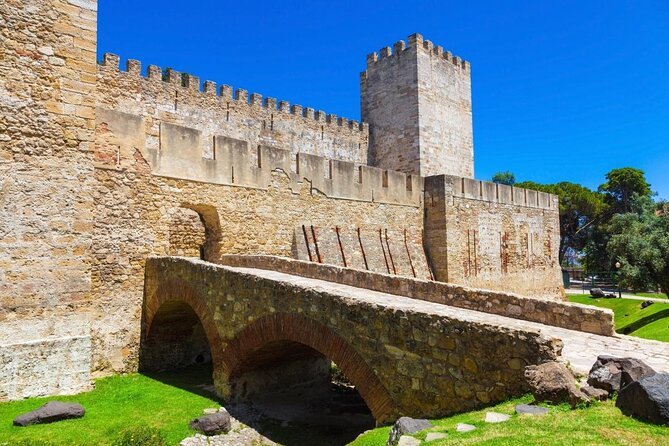
Source: Viator Source: denniscallan -
The Cathedral of Lisbon is one of the city's oldest buildings. Lisbon Cathedral was built in the mid-12th century after Christian crusaders headed by King Afonso Henriques retook the city from the Moors.
Lisbon Cathedral, which was originally erected in the Romanesque style, has subsequently undergone a succession of restorations and modifications, not least due to earthquake damage. As a result, aspects of various styles, particularly Baroque, can be found in this formidable fortress-like structure today. The cloisters of the cathedral, which date from the 14th century, contain some notable artifacts as well as inscriptions and tombs.
Visitors can now marvel at the cathedral's magnificent fortress-like aspect. The cathedral is characterized by a mix of Romanesque, Gothic, Baroque, and neoclassical architectural and artistic styles. The treasury, which is made up of four halls with suits, gems, and relics from various centuries, is located on the second floor.
Location: Lisbon
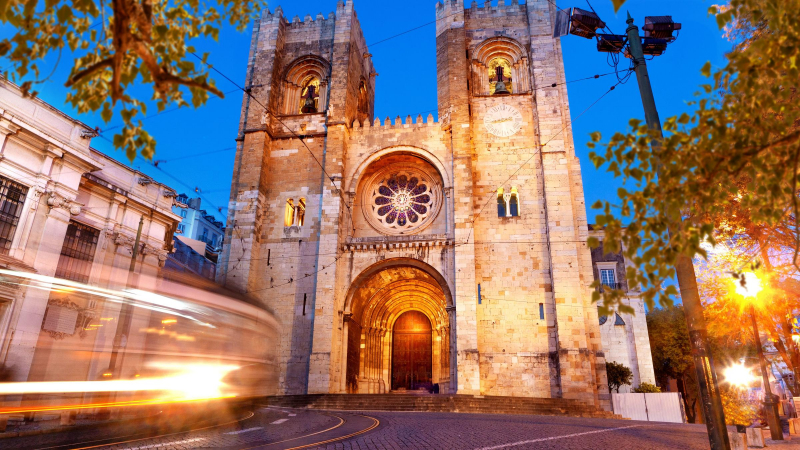
Source: Planetofhotels.com Source: For 91 Days Travel Blog -
The Belém Tower, one of the most beautiful historical sites in Portugal, is a magnificent medieval defense tower on the northern bank of the Tagus River in Lisbon, Portugal, and a symbol of Europe's Age of Discovery. Belém Tower, also known as The Tower of St Vincent, was built between 1514 and 1520 during King Manuel's reign by Portuguese architect and artist Francisco de Arruda to commemorate Vasco da Gama's legendary Portuguese explorer's trip to India. It is regarded as one of the best examples of Manuelino style architecture of the time, but it also has distinguishing Moorish characteristics such as ornately adorned towers.
Belém Tower, together with the adjoining Jeronimos Monastery, is a stunning mix of robust defense and detailed decoration, and has been a UNESCO World Heritage site since 1983.
The Belém Tower was included in the list of Portugal's Seven Wonders in 2007, and it is one of the top ten tourist attractions in the country.
Location: Lisbon
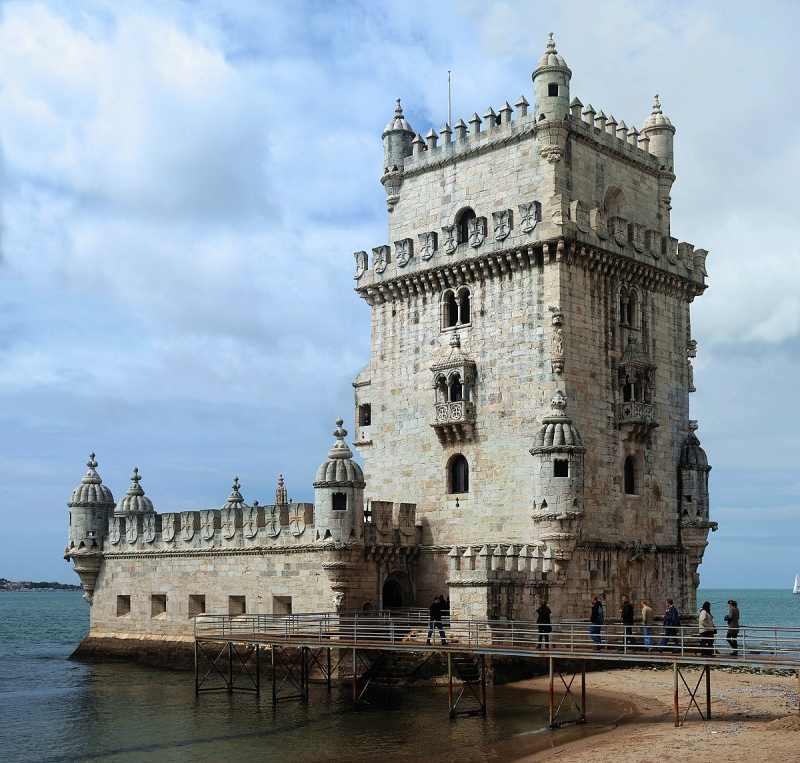
Source: Wikipedia Source: Tom Hall -
The Pena National Palace is one of the most expressive and magnificent representations of romanticism in the nineteenth century. This quirky multi-colored artwork, perched high on a ridge amid swirling mists, is part of Sintra's Cultural Landscape, a UNESCO World Heritage Site. It may be visible from Lisbon on a clear day. Millions of travelers visit Sintra each year to see the palace, which has become one of Portugal's most well-known tourist attractions, so expect it to be very busy during the summer high season.
The Pena National Palace is now open to the public and boasts an almost fairy-tale exterior as well as exquisite and spectacular décor. And if the palace wasn't enough, the well-kept park features a variety of gardens, grottoes, ponds, and fountains, all of which are sprinkled with statues and sculptures. It's no surprise that it's one of the most beautiful historical sites in Portugal.
Location: Lisbon
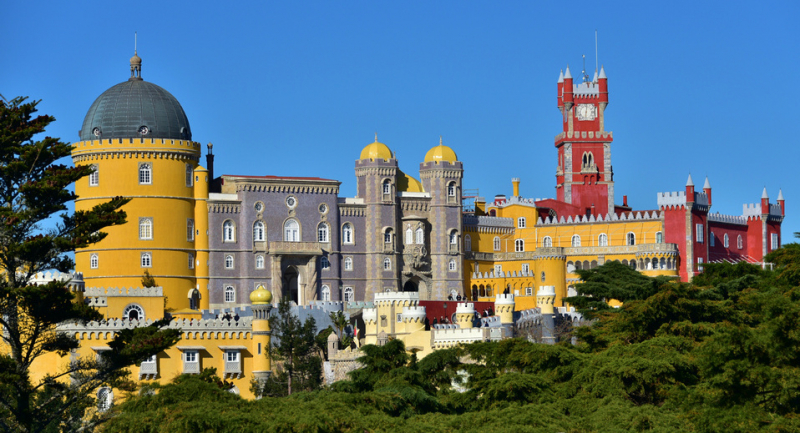
Source: Wikipedia Source: Luxury Homes -
One of the most beautiful historical sites in Portugal, the Carmo Convent in Lisbon is a partially damaged medieval convent that is now operated as an archaeological museum. Nuno lvares Pereira, a key player in Portuguese military history – notably the victory at the Battle of Aljubarrota – became a member of the Carmelite Order and built Carmo Convent in 1389. Carmo Convent was destroyed by an earthquake in 1755, and the beautiful ruins are now open to the public. The Museu Arqueologico do Carmo, which has a collection of prehistoric to medieval items, is presently housed in the convent.
Today, the convent serves as a museum for both locals and visitors. A tiny archaeological museum stands in the location of the former main altar, with an eclectic assortment of graves, the largest of which is that of King Ferdinand I, as well as ceramics, statues, and mosaics.
A Visigoth pillar and a Roman tomb with reliefs portraying the Muses are also on display. Shrunken heads, South African mummies, a jasper sculpture of the Virgin Mary, ancient tombstones, Visigothic antiquities, and 13th-century coins are among the other items on display.
Location: Lisbon
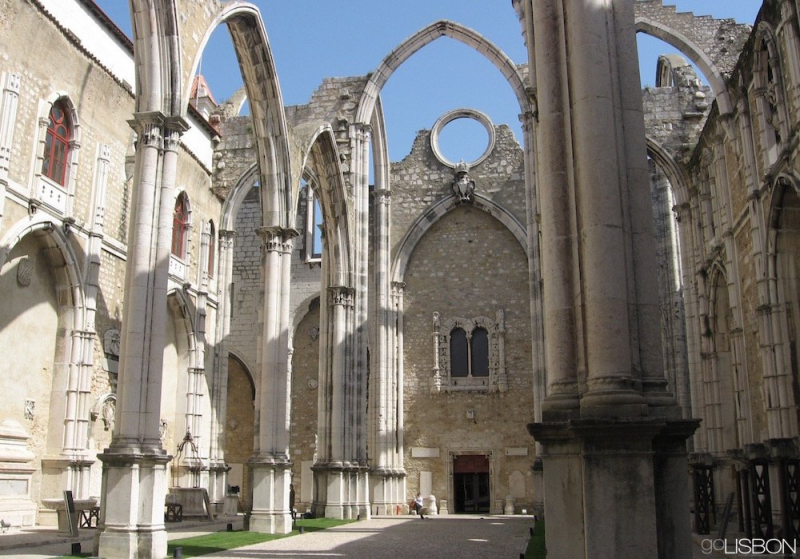
Source: Go Lisbon! Source: Carlos Garrido
































